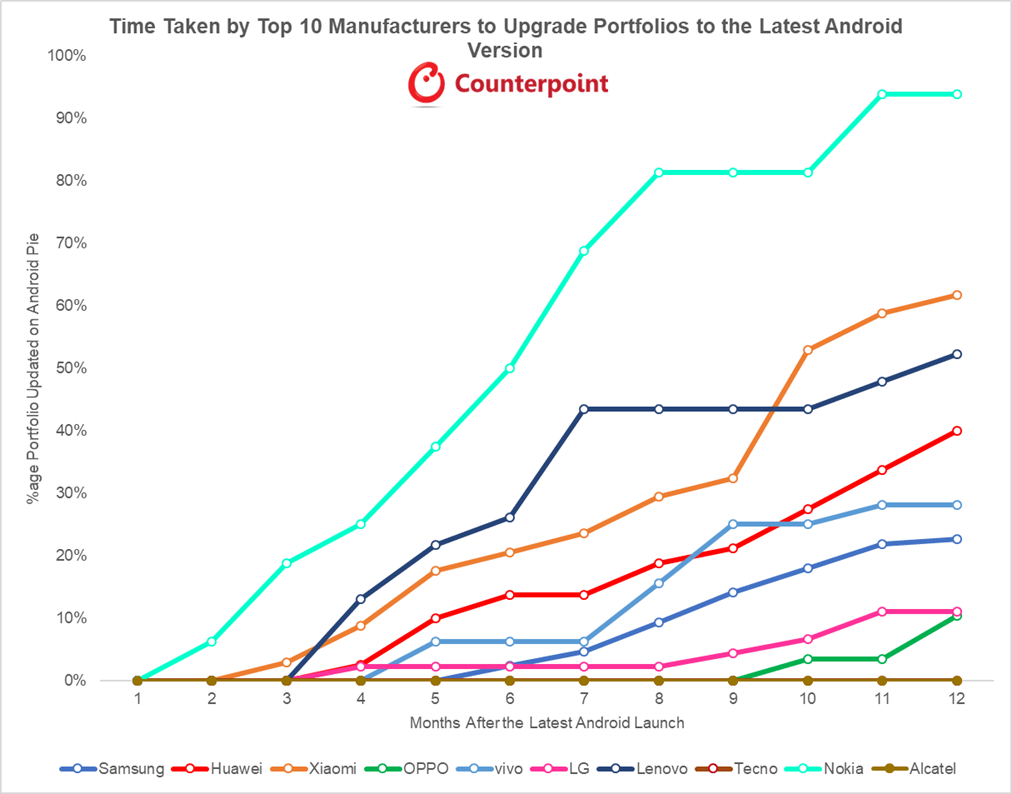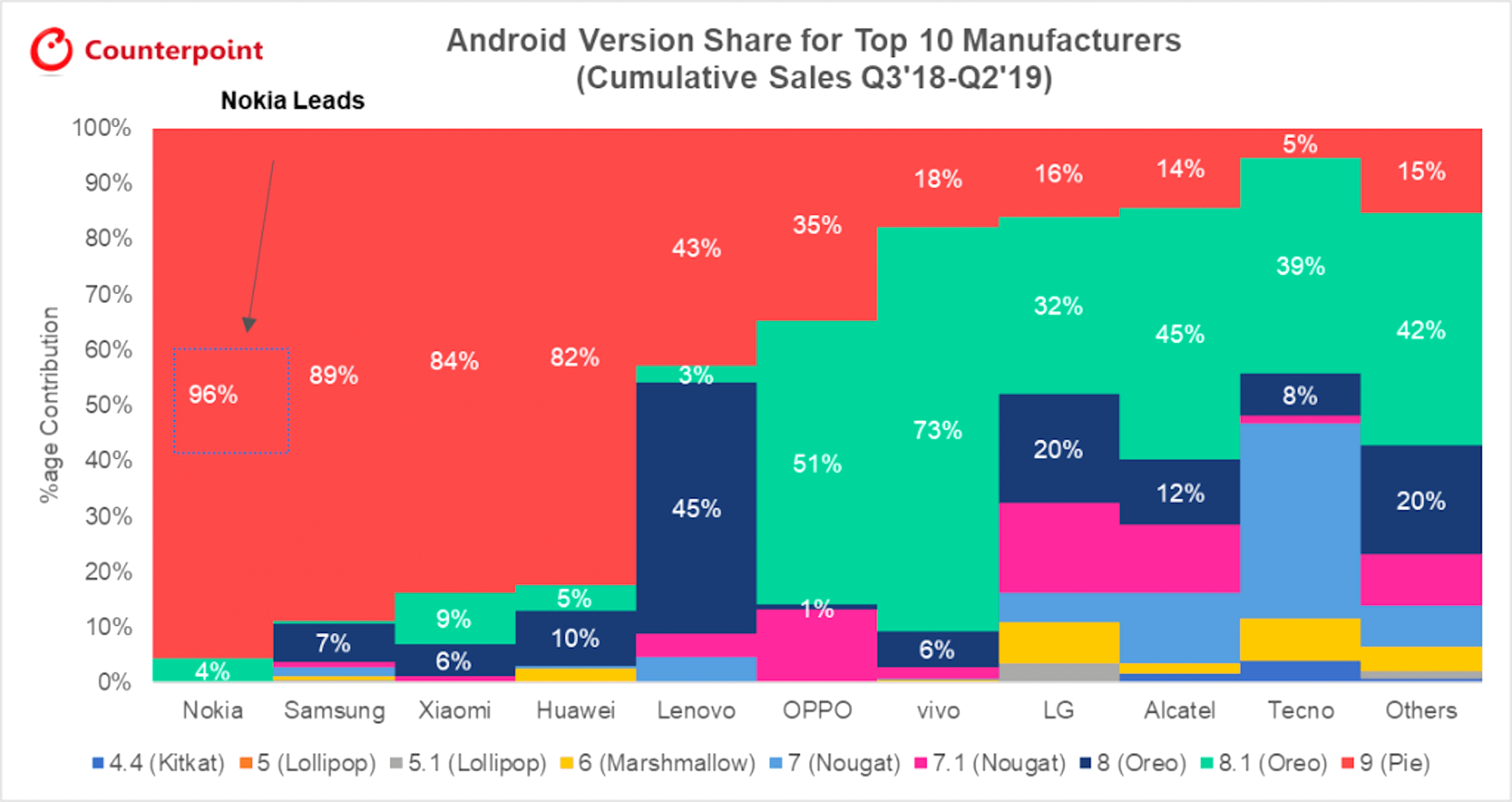Why it matters: While it's no secret that Android is a very fragmented ecosystem, it's important to look at how committed manufacturers are when it comes to keeping their devices up to date with the latest OS and security patches. It turns out that even big brands like Samsung aren't doing a great job updating lower-end handsets, but interestingly enough, Nokia has shown that it is in fact possible, with 96% of the devices it's sold since 2018 already running the latest version of Android.
Apple has a much easier time keeping iPhones up-to-date since it doesn't have to deal with a large number of different devices and the experience is standardized across all of them. In the Android camp, however, there are so many different models coming out from each manufacturer and with so many skins and other modifications that companies often choose to leave them behind and steer you towards a new purchase instead.
A new report from Counterpoint Research says that Nokia is leading other manufacturers when it comes to ensuring its users are running up-to-date software on their phones. The market research firm estimates that nearly 96% of the handsets sold by HMD Global under the Nokia brand for the last two years are running Android Pie or have the upgrade available for installation.
The researchers analyzed Android version share for the top ten manufacturers taken by cumulative sales between Q3 2018 and Q2 2019, and Google was excluded for obvious reasons. The only brands that come close to Nokia's performance are Samsung followed by two Chinese giants - Xiaomi and Huawei, the first of which has recently had a lot of success in Europe. As for Huawei, the company is between a rock and a hard place, as it's limited to older Android versions because of licensing issues until it can use its in-house smartphone OS as a replacement.
Others such as Lenovo, LG, Alcatel, and Tecno are top contributors to Android fragmentation, with Tecno only managing to get 5 percent of all the handsets it sold in the last two years to Android Pie. Most of its devices are still stuck with Oreo, Nougat, and even Marshmallow. Chinese giants Oppo and Vivo both managed strong sales in Asia and Europe but both have yet to upgrade more than 35 percent of their product lineups to the latest Android.

It's also important to look at how long it takes for manufacturers to roll out Android upgrades to their smartphones after the official release. Nokia has a simple trick in their hands that Lenovo has also tried to replicate in recent times - its devices are pretty much all part of the Android One program, and that means they're running close to stock Android and are easier to keep updated. That is why Nokia and Lenovo can have almost half of their handsets updated in six months, and others take twice as long to achieve that.
Of course, Google has been trying to improve this situation for years, first by promising to publicly shame them for being slow to update their handsets, and then with programs like Project Treble, where Google is working on separating the vendor implementation from the Android OS framework to make updates easier to deploy for OEMs. With Android Q and Project Mainline, Google is trying to bypass manufacturers and push updates to all Android devices.
Counterpoint lead Peter Richardson noted that while Android updates are important in the grand scheme of things, consumers have very low awareness about what they're running on their phones, similar to how iPhone users think they've got a 5G handset even though Apple has yet to come out with one.
He goes on to explain that while flagships are typically updated first, many sub-$200 phones which are sold in high volumes to price-conscious consumers are usually left on the version of Android they were launched with. We know that Samsung opts to roll out updates less often on their lower end lineups, which is a big compromise in terms of security, especially since much of the vulnerable code turns out to be part of the modifications made by manufacturers themselves.
Google is trying to tackle that problem as well by constantly updating contractual requirements for Android phone makers. Last year it was found that in order to enjoy continued access to Android licenses, manufacturers will have to provide timely security updates for at least two years of a device's lifespan.
